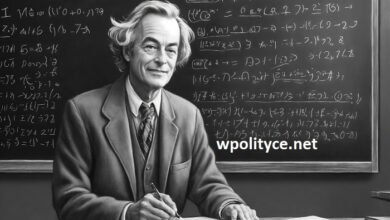Elizabeth Kenny: The Australian Nurse Who Challenged the Medical Establishment with Her Polio Treatment

Elizabeth Kenny was a self-taught Australian nurse who developed a novel approach to treating polio, a disease that causes paralysis and deformity in children. Her method, which involved applying hot compresses and gentle exercises to the affected muscles, was controversial and opposed by many doctors who preferred to immobilize the limbs with splints. However, Kenny persisted in her advocacy and proved the effectiveness of her technique through her work in Australia, Europe, and the United States. She was hailed as a pioneer of physical therapy and a hero of polio patients. In this blog post, we will explore her life, work, and legacy.
Early Life and Education
Elizabeth Kenny was born on September 20, 1880, in Warialda, New South Wales, to Mary and Michael Kenny. Her father was an Irish immigrant farmer and engineer who taught her about mechanics and electricity. Her mother was an Australian-born teacher who home-schooled her and encouraged her interest in medicine and anatomy.
Kenny received only a few years of formal education at a convent school near Guyra. She then became a self-taught pianist and music teacher. She also worked as a broker of agricultural products between local farmers and northern markets. She had a passion for riding horses and motorcycles, which led to her breaking her wrist in a fall when she was 17.
She was treated by Dr. Aeneas McDonnell, a surgeon in Toowoomba, who became her mentor and friend. He allowed her to study his anatomy books and model skeleton, which sparked her curiosity about how muscles worked. He also gave her a letter of recommendation to work as a nurse.
Although she had no formal training or certification as a nurse, Kenny started her own nursing practice in Nobby, Queensland, in 1910. She traveled by horseback or motorcycle to visit her patients in remote areas. She also opened a small hospital in Clifton, where she treated various ailments and injuries.
Read more about Mária Telkes: The Sun Queen of Solar Energy
Career and Achievements
Kenny’s career took a turn when she encountered her first case of polio in 1911. Polio, also known as infantile paralysis, was a devastating disease that affected the nervous system and caused muscle weakness, pain and spasms. The conventional treatment at the time was to immobilize the limbs with splints or braces, which often resulted in permanent stiffness and deformity.
Kenny, however, had a different idea. She recalled Dr. McDonnell’s advice to use heat as a pain reliever. She applied hot moist cloths to the affected muscles, which seemed to relax them and ease the pain. She then gently moved the limbs to restore their function and prevent atrophy. She called this process “re-education of muscles” or “muscle re-patterning”.
Kenny’s method was met with skepticism and resistance by many doctors who considered it unscientific and dangerous. They accused her of being ignorant, arrogant and fraudulent. They also tried to discredit her by pointing out that she was not a registered nurse or a qualified physiotherapist.
However, Kenny did not give up. She continued to treat polio patients with remarkable success. She also gained support from some influential allies, such as Dr. McDonnell, Dr. George Washington Crile (a renowned American surgeon who hired her as a biophysicist at the Cleveland Clinic), Dr. Robert Lovett (a Harvard orthopedist who endorsed her method), Eleanor Roosevelt (the First Lady of the United States who invited her to demonstrate her technique at the White House), and Franklin D. Roosevelt (the President of the United States who suffered from polio himself).
Kenny also traveled extensively to promote her method around the world. She worked in Australia, England, Norway, Sweden, Denmark and the United States. She established clinics, schools and foundations to train nurses and therapists in her technique. She also wrote books and articles to explain her theory and practice.
Kenny’s method proved to be effective in reducing pain, improving mobility and preventing deformity in many polio patients. It also influenced the development of physical therapy as a profession and a discipline. It paved the way for further research on muscle physiology and rehabilitation.
Kenny received many awards and honors for her work on polio treatment. She was awarded honorary degrees from several universities, including Harvard University, Yale University and Western Reserve University. She was also nominated for the Nobel Prize in Medicine three times. She was featured in magazines such as Time and Life as well as in films such as Sister Kenny (1946), where she was portrayed by Rosalind Russell.
Later Life and Legacy
Kenny retired from active work in 1951 due to ill health. She suffered from Parkinson’s disease, arthritis and heart problems. She returned to her native Australia, where she died on November 30, 1952, in Toowoomba, Queensland. She was buried at the Nobby Cemetery.
Kenny is widely regarded as one of the most influential and courageous women in medical history. Her contributions to polio treatment and physical therapy have saved and improved the lives of millions of people. Her vision and determination have inspired generations of nurses and therapists to challenge the status quo and seek new ways of healing.




